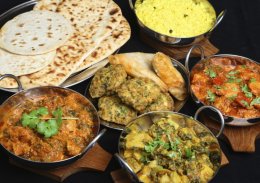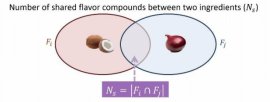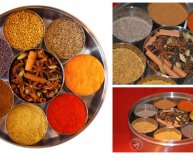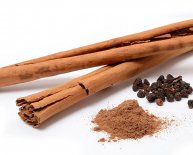
Desi Spice Indian Cuisine
 Indian meals, featuring its hodgepodge of ingredients and intoxicating aromas, is coveted internationally. The labor-intensive cuisine as well as its mixture of spices is much more usually than perhaps not a revelation for many who sit to eat it for the first time. Heavy amounts of cardamom, cayenne, tamarind along with other tastes can overwhelm an unfamiliar palate. Together, they assist develop the pillars of exactly what tastes brilliant to so many people.
Indian meals, featuring its hodgepodge of ingredients and intoxicating aromas, is coveted internationally. The labor-intensive cuisine as well as its mixture of spices is much more usually than perhaps not a revelation for many who sit to eat it for the first time. Heavy amounts of cardamom, cayenne, tamarind along with other tastes can overwhelm an unfamiliar palate. Together, they assist develop the pillars of exactly what tastes brilliant to so many people.
But behind the benefit of Indian food — why is it therefore unique so tasty — can be a complete stranger and subtler truth. In a sizable new analysis in excess of 2, 000 well-known meals, information experts can see probably the key reasons why Indian food tastes therefore unique: it can one thing radical with tastes, anything very different from everything we tend to do in america additionally the remainder of Western tradition. Plus it does it in the molecular amount.
Before we get further, let us just take one step back and think about what flavors are and exactly how they interact. If you decide to hold a microscope to many Western dishes, you would get a hold of an appealing although not all-too-surprising trend. Well-known food pairings inside an element of the globe combine ingredients that share like tastes, which food chemists have actually separated to their molecular components — exact chemical substances that, when combined, emit a definite taste.
All of the compounds have actually clinical brands, though among simpler compounds is acetal, which, due to the fact food chemist George Burdock features written, is "refreshing, pleasant, and [has a] fruity-green smell, " and may be found in whiskey, apple liquid, orange juice and natural beets. On average, you can find only over 50 taste compounds in each meals ingredient.
a nifty chart provided by Scientific United states in 2013 programs which meals share the essential flavor substances with other people and which meals pairings have the many flavor substances in keeping. Peanut butter and roasted peanuts get one of the very considerable overlaps (not surprising indeed there). But you will find connections which can be more difficult to predict: strawberries, as an example, do have more in keeping with white wine than they are doing with apples, oranges or honey.
Information crunching Indian recipes
 Chefs inside western like to make dishes with what have overlapping tastes. Yet not all cuisines follow exactly the same guideline. Numerous Asian cuisines are shown to belie the trend by favoring meals with ingredients which never overlap in flavor. And Indian food, specifically, the most effective counterexamples.
Chefs inside western like to make dishes with what have overlapping tastes. Yet not all cuisines follow exactly the same guideline. Numerous Asian cuisines are shown to belie the trend by favoring meals with ingredients which never overlap in flavor. And Indian food, specifically, the most effective counterexamples.
Researchers at Indian Institute for Technology in Jodhpur crunched information on several thousand meals from a well known on line recipe site known as TarlaDalal.com. They broke each meal down to its ingredients, after which compared how many times and greatly components share flavor substances.
The solution? Perhaps not too often.
Discover a simple way to produce feeling of what they did, through lens of an individual, theoretical meal. Say you've got a dish with 4 different components, like the one below:
Each of those ingredients possesses its own a number of flavor compounds. And any two of those ingredients' listings could have some overlap. Take the coconut and onion, for-instance. We are able to all agree totally that those two things tend to be quite different, but we could additionally see (into the Venn drawing below) that there's some overlap in their flavor make-up. (overlook the math symbols.)
You can produce the exact same drawing for all your components with overlapping taste compounds, like in this diagram. There are six that have overlap. (once again, ignore the mathematics.)
The scientists did this for every single associated with thousands of meals, that used an overall total of 200 ingredients. They examined exactly how much the root taste compounds overlapped in solitary meals and discovered one thing completely different from west cuisines. Indian cuisine tended to blend ingredients whoever flavors don't overlap whatsoever.
"We unearthed that normal taste revealing in Indian cuisine had been considerably lower than expected, " the researchers typed.
Quite simply, the greater overlap two components have in flavor, the more unlikely they're to arise in the exact same Indian meal.
The unique makeup products of Indian cuisine can be seen in a few meals above others, therefore seems to be associated with making use of particular components. Herbs often indicate dishes with flavors having no chemical typical ground.
Much more specifically, many Indian dishes have cayenne, the foundation of curry dust that's in any Indian curry. When a dish includes cayenne, the scientists discovered, it is unlikely to own other what share similar flavors. Equivalent can be said of green bell pepper, coriander and garam masala, that are almost as common in Indian cuisine.
"each one of the spices is exclusively positioned in its dish to profile the taste revealing design with rest of the ingredients, " the researchers noted.
Milk, butter, loaves of bread, and rice, meanwhile—all which are hallmarks of west cuisine—were found becoming related to just the reverse: flavor pairings that match. Whenever some of those components appeared in an Indian meal, there is a good chance there would be plenty of flavor overlap.
a concept for many cooks
The takeaway is the fact that element of why is Indian meals so appealing is the method flavors rub facing both. The food is difficult, no doubt: the average Indian dish, all things considered, contains at the least 7 components, and the final amount of ingredients seen because of the scientists amounted to almost 200 from the roughly 381 noticed throughout the world. But those ingredients — additionally the herbs particularly — are exclusively important because in any solitary meal, every one brings a unique flavor.
Nevertheless the upshot should also be a thought that we might be approaching meals from the wrong angle. Incorporating components with like tastes is a useful (and sometimes tasty) method, nonetheless it could be a somewhat inaccurate guideline. Indian food, after all, is cherished globally, and yet depends on a decidedly different ingredient pairing logic.

















